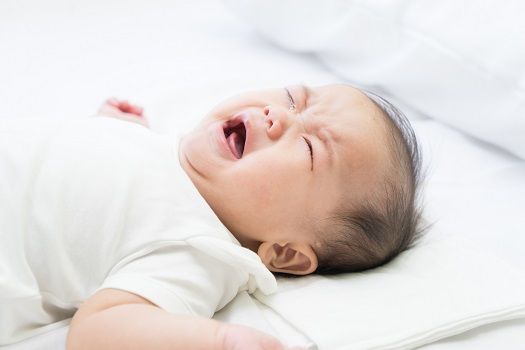Crying Infants May Calm Down with Acupuncture
Acupuncture might help infantile colic when removing cow's milk doesn't.

Tears are expected among infants, but excessive crying? Well, parents hope that’s not the case. However, an estimated 10% to 20% of infants around the world do it. The benign condition, infantile colic, is classified as a baby crying for more than three hours per day, more than three days per week, for longer than three weeks.
Acupuncture is most commonly used to treat pain—whether stemming from headache, chronic pain, or osteoarthritis—but the alternative medicine technique also helps gastroenterological issues. It could also help infantile colic, says a new study conducted by Kajsa Landgren, PhD, and Inger Hallström, RSCN, RN, from Lund University in Sweden.
“Acupuncture is sometimes used to treat infantile colic, despite sparse and conflicting evidence,” the researchers wrote in the journal Acupuncture in Medicine.
Only three randomized controlled trials (RCTs) have examined the use of acupuncture for infantile colic. The first and second trials concluded that minimal acupuncture (20 seconds and two seconds, respectively) at point LI4 (where the thumb and index finger meet) significantly reduced crying compared to no acupuncture. The third trial, however, did not find a significant difference in crying with 30 seconds of treatment at ST36 (located a few inches below the knee cap). None of the trials showed improvement at the end of the follow-up period.
In this RCT, Landgren and Hallström gathered 144 infants whose parents were looking for help with infantile colic. Colicky babies were ages 2 to 8 weeks old and were off of cow’s milk for at least five days—since that dietary change has long been shown to reduce crying. The infants were randomly assigned into one of three groups:
A. Standard minimal acupuncture at L14 point for two to five seconds without stimulation
B. Tailored acupuncture at a maximum of five acupuncture points for up to 30 seconds with mild stimulation
C. No acupuncture
The acupuncture participants underwent the therapy twice a week for two weeks—in addition to usual care for infantile colic, which is typically parental support and reassurance. Parents kept track of their baby’s fussing and crying in a diary.
Results showed that both types of acupuncture reduced crying better than the current gold standard care by itself.
“I was a bit surprised that there was no significant difference between the two acupuncture groups. During the second intervention week, only 38% of the infants who received acupuncture fulfilled the criteria for colic, compared to 65% in the control group,” Landgren said in CNN.
Overall, the babies tolerated acupuncture with mild stimulation fairly well. Out of the total 388 acupuncture sessions, there was no crying in 200 sessions, crying for less than one minute in 157 sessions, and crying for more than one minute in 31 sessions. In addition, there’s yet to be a study indicating any serious adverse events associated with acupuncture, and this study was no different.
While this research shows positive results on acupuncture in infants, the researchers say that before seeking clinical help, parents should try cutting cow’s milk from their baby’s diet.
The study, “Effect of minimal acupuncture for infantile colic: a multicenter, three-armed, single-blind, randomised controlled trial (ACU-COL),” was published in the journal Acupuncture in Medicine. The news release was provided by the BMJ.
Related Coverage:
Acupuncture Can Help TBI Headaches
Acupuncture for Kids’ Chronic Pain? Study Says Yes
Acupuncture Can Relieve Fibromyalgia Pain, If Its Tailored Per Patient